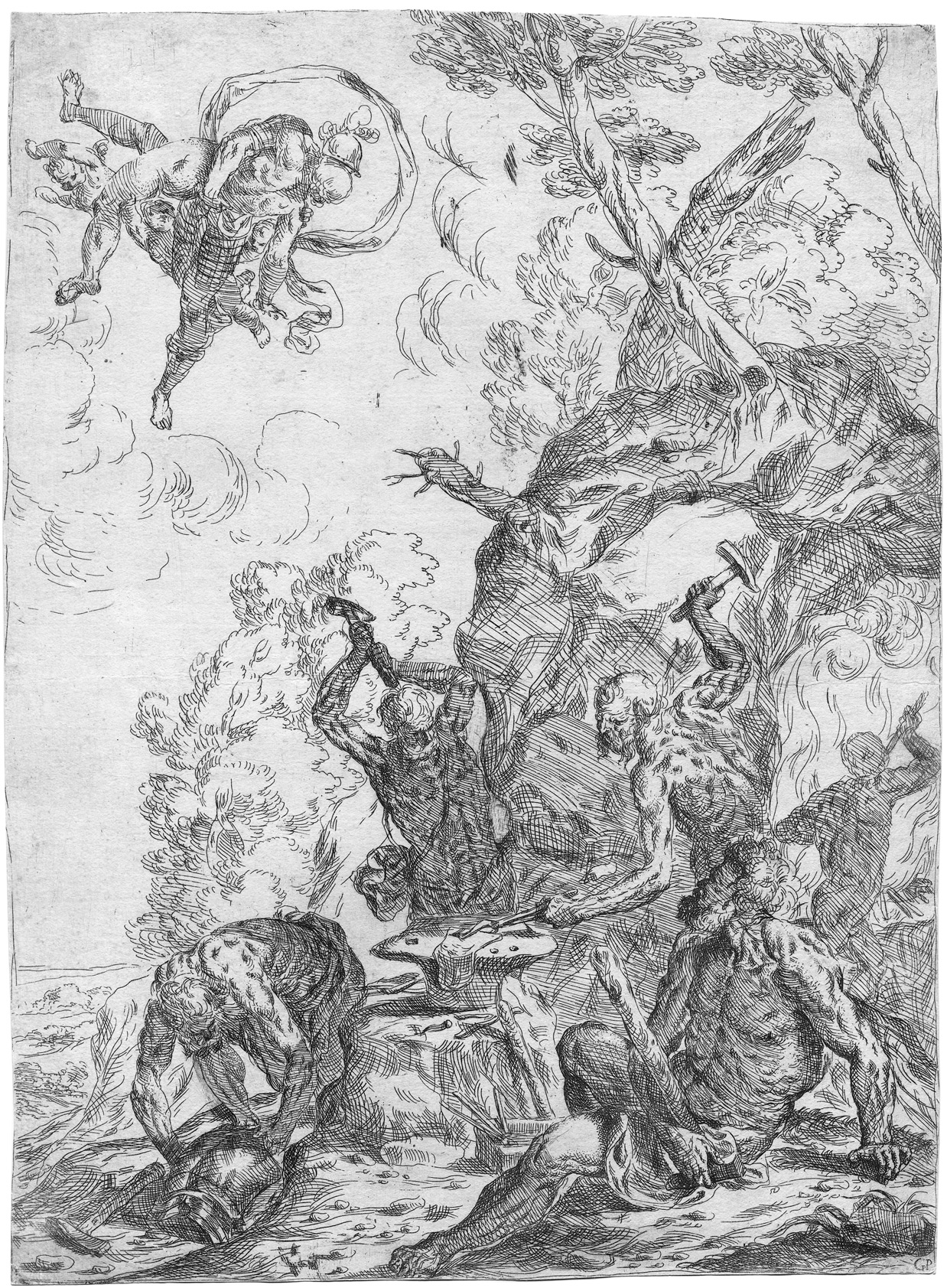Loading the page ...
Giovanni Pietro Possenti
(1618–1659, Bologna)
Vulcan’s Forge with Mars and Venus. Etching. 39.3 x 28.7 cm. Bartsch XIX, 186, I (of II); Le Blanc III, 8; Nagler, Die Monogrammisten II, 565, 7; III, 276, 5 (Pecham); Hollstein XXXI, B Works by Possenti, 9.
The identity of the monogrammist GP was long a source of confusion, which in the past led to different attributions. Bartsch was aware of a total of seven etchings, which he ascribed to an anonymous pupil of Guido Reni. Later on, Nagler associated the minor oeuvre with the Augsburg-born painter and etcher Georg Pecham. It was not until 1994 that Nadine M. Orenstein came up with convincing proof that the ten etchings known to date stem from the painter and printmaker Giovanni Pietro Possenti, who was active in Bologna, Padua and Venice (see Nadine M. Orenstein, “Possenti and Hercules”, Print Quarterly, XI, No. 1 March 1994, pp. 20–25).
All these prints show the same artistic idiosyncrasy and a dynamic, highly suggestive style of etching. On the subject of Possenti’s etching technique Bartsch spoke of hatchings “faites d’une manière confuse et tournées en différents sens”. Possenti generally preferred small formats. Our etching thus owes its special place in the oeuvre to its size and elaborate multi-figure composition. At the entrance to a cave we see five blacksmiths at work. The sinewy bodies of the men, charged with feverish energy, are naked except for skimpy loincloths. One of them is only sketchily indicated raking a blazing fire in a grotto. Two of the blacksmiths are pounding a glowing piece of metal on an anvil with mighty blows of their hammers, while a third turns away to lay a just completed breastplate carefully on the ground. In the right foreground sits the god of fire, Vulcan, who gazes up gloomily at the sky to witness his unfaithful consort Venus being abducted by Mars.
Possenti’s pictorial narrative is exceptionally suggestive and original. The arduous and laborious nature of terrestrial toil stands in a dialectic relation to the ease of surrender to the senses. Compositionally, the shadowy terrestrial realm and the open celestial sphere are distinctly separate, and Possenti’s etching method takes account of this. By means of an unusually free and dynamic etching technique and with the help of dense cross and parallel hatchings, small pen strokes and stippling the artist has captured the texture of the rocky terrain and the anatomy of Vulcan’s assistants; the sombre faces of the men and their manneristically exaggerated muscles testify to physical effort and the force of passion. Mars and Venus, by contrast, have been treated in a light, delicate style. Accompanied by two cherubs, they float effortlessly skywards. A gust of wind bends the tree trunks, stirs up leaves and clouds and seems to lend impetus to the flight of the divine pair.
A very fine, early impression, trimmed on or at places minimally inside the borderline. Before the horizontal line in the upper third of the image that is characteristic for the second state, before the inscription and before the coat of arms. An unobtrusive printer’s crease, minor repairs and traces of ageing, otherwise in very good condition.
Contact us for further information